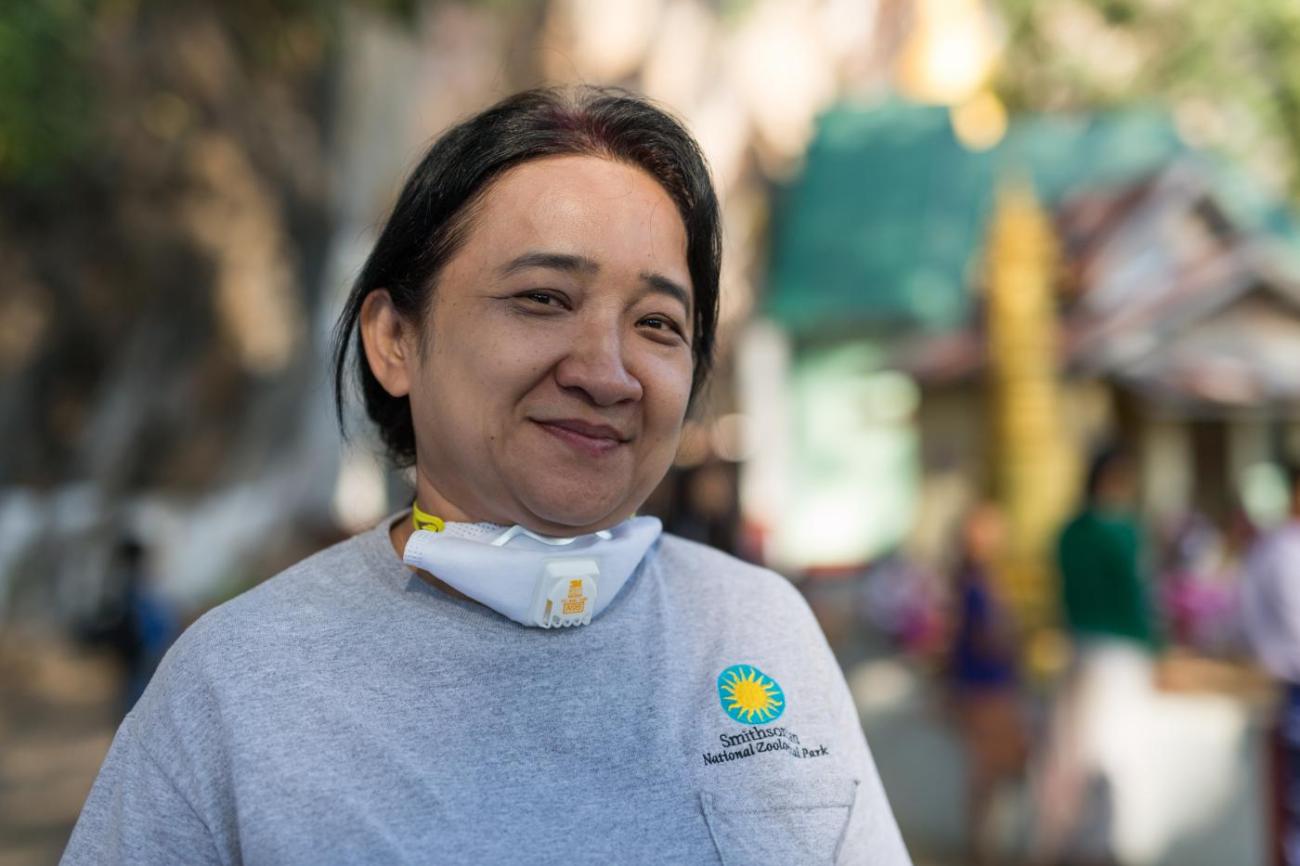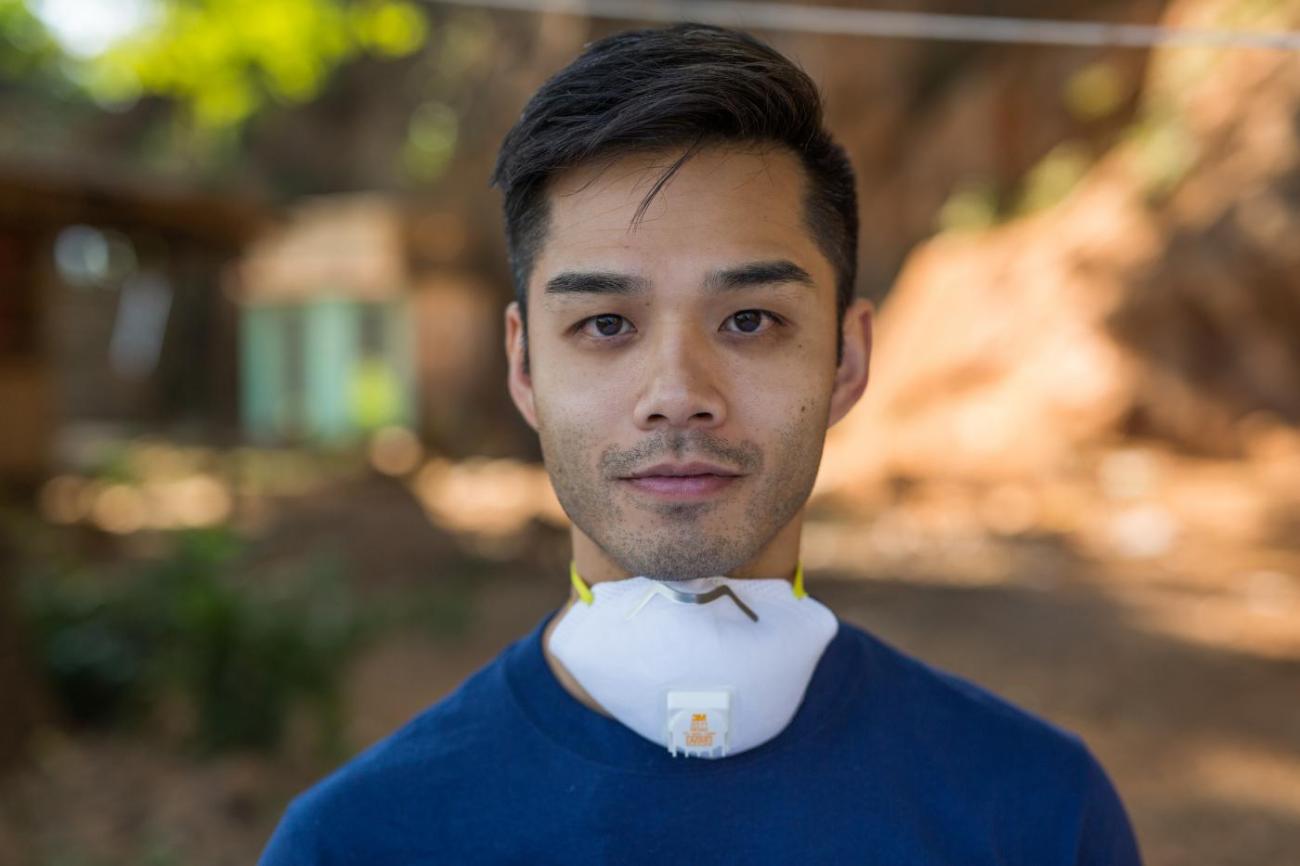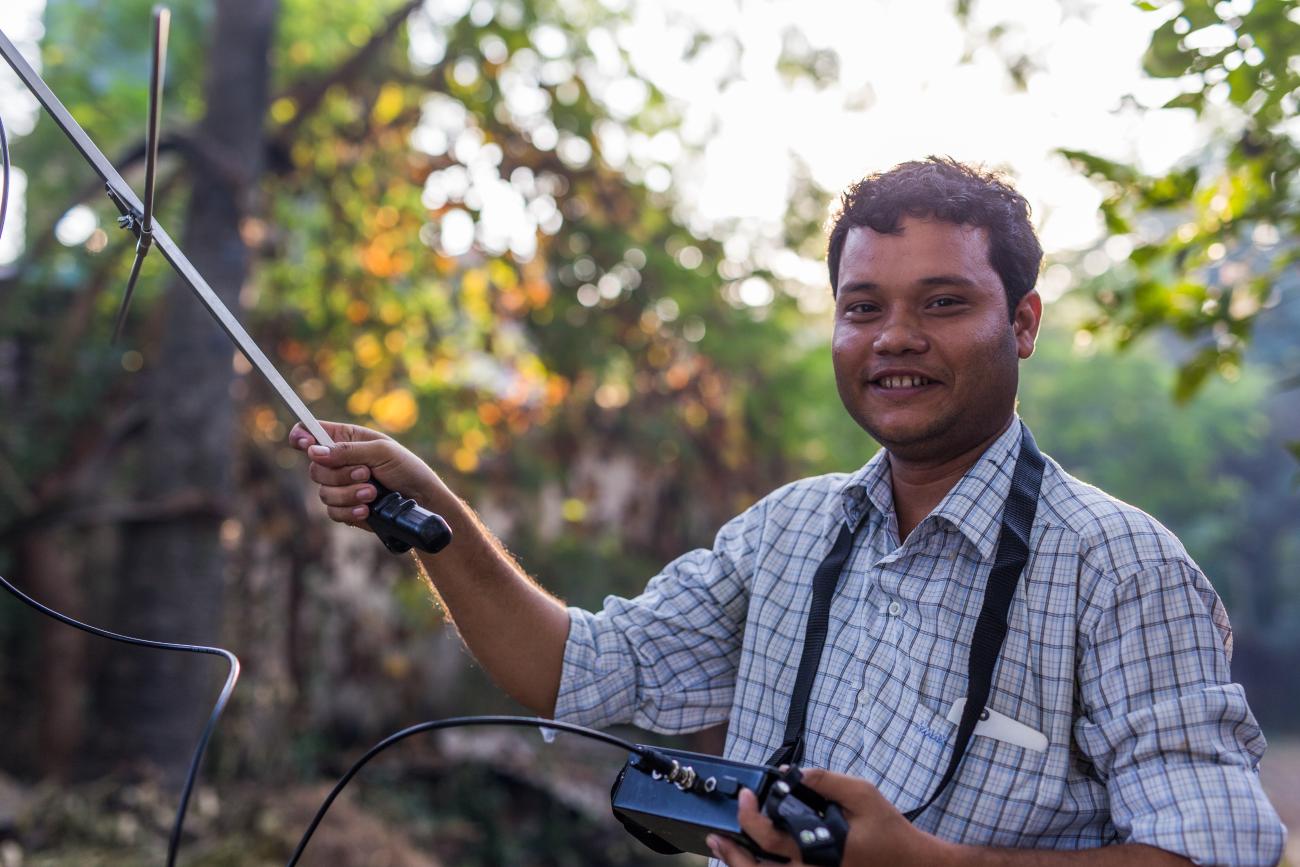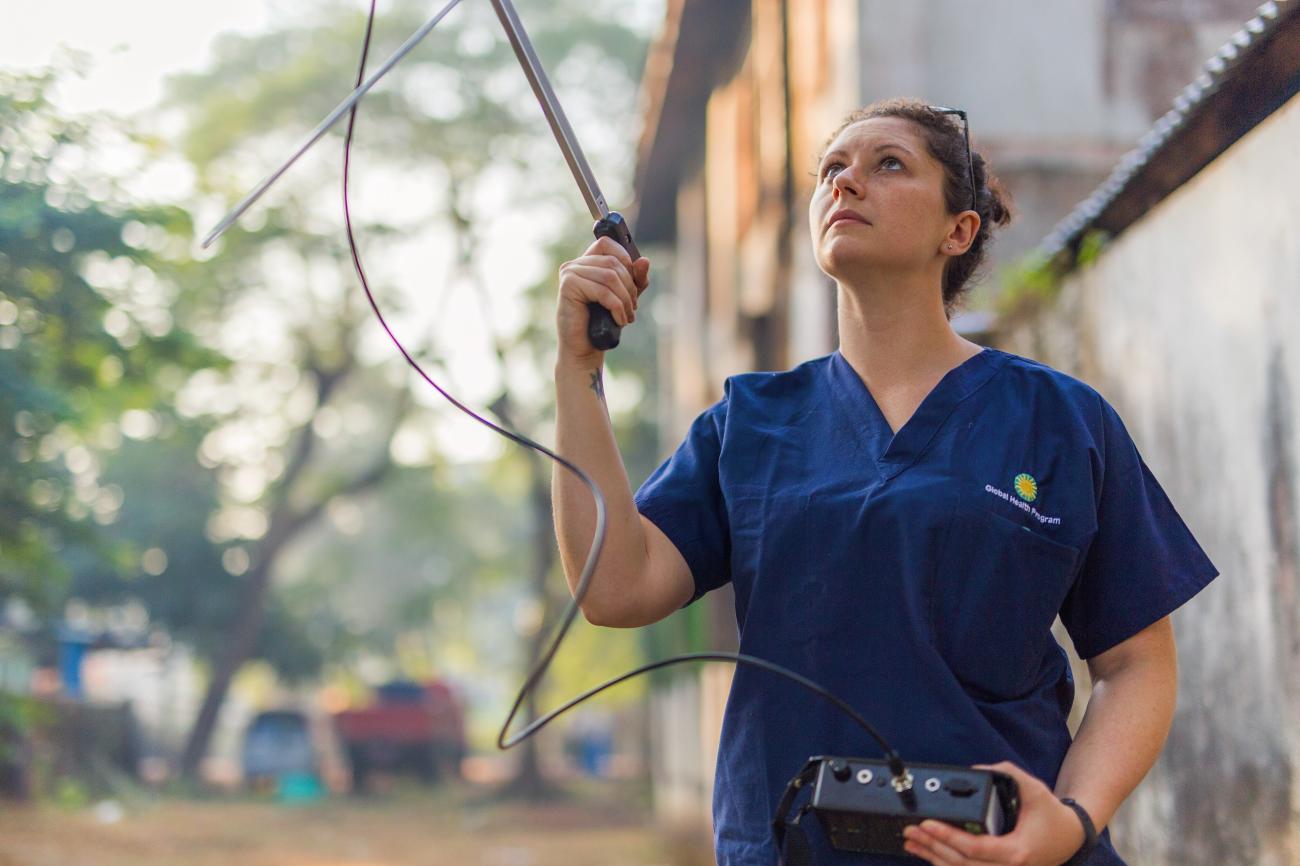Field in Focus is a video series that brings you into the field with Smithsonian scientists working to save species around the globe.
Thousands of bats take to the sky as dusk settles over Linno Cave in Myanmar’s Hpa An region, and each evening a crowd of tourists gathers to witness their flight.
Around the world, similar destinations attract visitors with opportunities to interact with wildlife. But some animals carry diseases that can spread to humans, such as influenza, Ebola and SARS.
Today, three-quarters of new infectious diseases originate in animals, and human activities — from travel to farming and urbanization — contribute to the spread of these viruses. So as experts collaborate to pinpoint where and when the next global health crisis might occur, they focus on areas where people come in contact with animals.
The Smithsonian Conservation Biology Institute’s Global Health Program is an integral part of this effort, working directly with experts from three Myanmar government ministries to lead USAID's PREDICT program activities in Myanmar. PREDICT aims to detect and discover zoonotic diseases (those spread between animals and humans) using a One Health approach, which recognizes the connection between human, animal and environmental health.
Introduction
Smithsonian researchers partner with experts in Myanmar studying human and animal health to find out what diseases are present in wildlife and whether they could pose a threat to humans. For the first time, see these scientists in the field as they collect blood from cave nectar bats, sample saliva from macaques and track the movement of flying foxes across the country.
Why Myanmar?
Myanmar is a biodiversity hotspot with vast rural settings and forests. That habitat supports a large number of species, including bats and other animals that, in other parts of the world, have been known to carry zoonotic and emerging viruses. The country is also becoming more developed, which leads to more high-risk interactions between humans and wildlife.
Global Health Program researchers work closely with resident scientists — and collaborate with Myanmar's Ministry of Agriculture, Livestock and Irrigation; Ministry of Health and Sports; and Ministry of Natural Resources and Environmental Conservation — to collect and analyze biological samples from wildlife and the humans they come in contact with.
The researchers also investigate domestic animals and coordinate with local healthcare professionals to identify viral risks in humans. PREDICT focuses on high-risk interfaces, or areas where interactions with animals might predispose humans to disease contraction. Understanding which diseases have the capacity to jump species and where that transmission is most likely to occur could lead to earlier detection and potentially life-saving intervention.
Meet Some of the Scientists
Following a One Health approach — which combines human and veterinary medicine to solve some of the world’s larger health and conservation problems — Myanmar’s PREDICT activities are co-led by Drs. Ohnmar Aung and Marc Valitutto.

Dr. Ohnmar Aung
Dr. Ohnmar Aung is a medical doctor and social scientist. As the country coordinator for PREDICT in Myanmar, she is responsible for guiding and coordinating the project within the country, alongside Myanmars three ministry partners. Dr. Aung has been a practicing physician for more than 15 years and has extensive experience bringing health infrastructure to communities throughout the country.

Dr. Marc Valitutto
Dr. Marc Valitutto is a wildlife veterinarian with SCBI’s Global Health Program and is the global lead for PREDICT in Myanmar. He coordinates and implements wildlife health studies and training in Asia, and his research focuses on One Health related topics, specifically evaluating the transmission of zoonotic diseases from wildlife to humans in Myanmar.

Dr. Kyaw Yan Naing Tun
Dr. Kyaw Yan Naing Tun is Myanmar’s PREDICT field veterinary surveillance officer. He is responsible for managing and training a team of Myanmar veterinarians and field assistants for the collection of animals and their samples in the field. He previously worked as a veterinarian for the Nay Pyi Taw Zoo after graduating from veterinary school with a Ph.D. in veterinary nutrition.

Dr. Jennifer Kishbaugh
Dr. Jennifer Kishbaugh is the Smithsonian’s 2017-2018 Judy and John W. McCarter, Jr. Global Health Veterinary Intern. She leads a pilot project to track Indian flying foxes using GPS collars, alongside the PREDICT Myanmar team.
The Bats of Linno Cave
More than 500,000 bats roost in Linno Cave, crossing paths with people and livestock every day. The team conducts most of their work at night when the bats emerge from the caves to feed. Working carefully, the researchers collect measurements and samples from each animal they catch.
Linno Cave is home to at least four bat species. So far, the researchers have successfully caught and taken samples from wrinkle-lipped bats and cave nectar bats. The bats are given sugar water before being released to ensure they have the energy to continue their flight — just like a person might receive a sugary juice after a blood drive.
Myanmar scientists at collaborating government laboratories in Yangon analyze the samples from each research site for four viral families:
- Coronaviruses
Examples: Severe acute respiratory syndrome (SARS), Middle East respiratory syndrome (MERS)
These viruses are common in many species, including camels and bats. Though most coronaviruses are species-specific, some have spread to humans. - Filoviruses
Examples: Ebola
In primates, including humans, filoviruses can cause hemorrhagic fever — which damages the vascular system and impacts the body's ability to regulate itself. This viral family has also been detected in pigs and bats. Bats are believed to be the source of recent Ebola outbreaks in Africa. - Paramyxoviruses
Examples: Nipah virus, Hendra virus, Measles, Mumps, Canine distemper
The flying fox is a natural carrier for both Hendra virus and Nipah Virus. Hendra can cause respiratory and neurologic diseases in horses and humans, while Nipah has spread to pigs and humans, causing encephalitis (inflammation of the brain) and respiratory illness. - Influenza viruses
Examples: Bird flu (e.g., H5N1, H7N9), Swine flu (e.g., H1N1)
Influenza viruses impact many species, including (but not limited to) ducks, chickens, pigs, whales, horses, seals and humans. The flu can spread from person to person, and is most common in the U.S. during the fall and winter.
Scientists sequence the viruses they detect in animals to determine their pathogenicity, or ability to cause disease, in humans. Any viruses detected in samples from animals or humans are also analyzed for pandemic potential. If a virus is considered a concern, the researchers work with Myanmar’s government to determine the immediacy of the issue and whether a response is necessary.
The researchers have already identified six new coronaviruses in saliva and fecal samples from insect-eating bats. One of these viruses had never been detected in the world, and the second had only been identified in Thailand’s bats. While these new viruses belong to the same family as SARS and MERS, there is no evidence that they pose a threat to people at this time.
The Monkeys of Kawgun Cave
Kawgun Cave, another research site in Hpa An, draws locals and travelers for its historic, religious and cultural significance. Groups of macaques congregate just outside the cave where visitors often feed them by hand. The team uses a unique method to collect DNA samples from these monkeys.
Sample collection can be challenging, and weather complications can damper the work. PREDICT guidelines require full personal protective equipment, which can be especially cumbersome in intense heat and rain.
At times, it may also be difficult to ask local participants to wear the protective equipment when they have long interacted with these animals without it. Ultimately, the team’s goal is to put as little stress as possible on their partners in the field, the local community members they interact with and the animals they sample.
LOOK INSIDE: Take a Virtual Tour of the Caves
Linno Cave
Get a 360-degree view inside the cave as thousands of bats head out in search of their nightly meal.
Kawgun Cave
Explore the sacred Buddhist site in this 360-degree video.